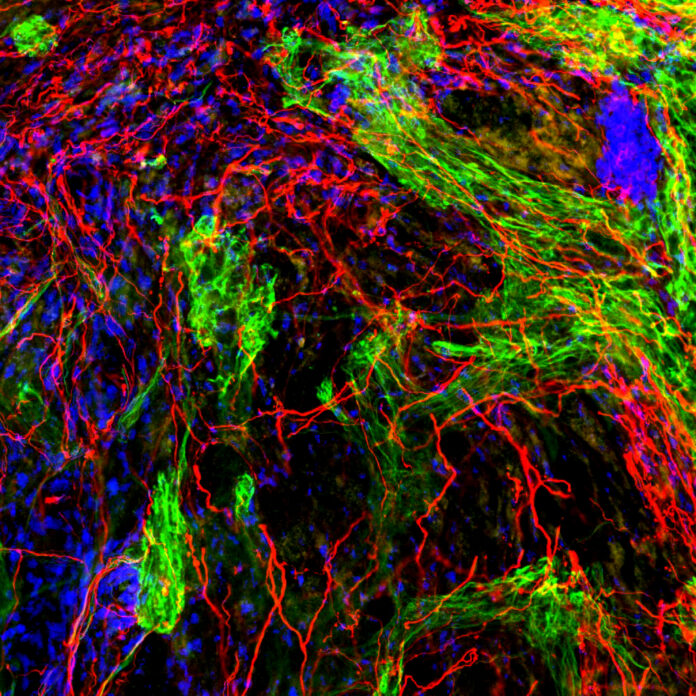
An injection of synthetic nanofibers helped reverse paralysis in mice with damaged spinal cords.
Earlier this year, researchers at Ruhr University Bochum successfully managed to reverse paralysis in paralyzed mice. In the study published in the journal Nature Communications, the study authors reported using injections of designer cytokines. This was the first time that researchers managed to restore damaged nerve cells in the spinal cord. Now, a new study has reported another breakthrough treatment that helped paralyzed mice walk within four weeks of a single injection. The study is available in the journal Science.
Injuries to the brain and spinal cord are mostly permanent. Less than 3% of people with a complete injury ever regain basic physical functions. Moreover, there is a lack of treatment options for such patients. Therefore, the team led by Northwestern’s Samuel I. Stupp aimed to find an effective therapy for those paralyzed after major trauma or disease.
The researchers developed an injectable gel containing nanofibers that mimicked the extracellular matrix of the spinal cord. The liquified drug immediately transformed into a gel upon injection; thus helping promote regeneration of damaged nerve fibers. However, what makes the gel unique is that Stupp and his team fine-tuned the molecules by incorporating a mutation into the peptide sequence. This made the molecules mobile; thus, helping them communicate with cells.
By making the molecules move, ‘dance’ or even leap temporarily out of these structures, known as supramolecular polymers, they are able to connect more effectively with receptors.
Samuel I. Stupp, study authors
In earlier experiments, the researchers had noted that mice injected with ‘dancing’ molecules had a better recovery than those treated with peptides lacking the mutation.
‘Dancing Molecules’ Work Miracles
These ‘dancing’ molecules’ then triggered two signals within the spinal cord. One activated a receptor called b1-integrin that helps promote the regrowth of axons. Whereas the second signal mimicked a molecule called fibroblast growth factor 2 which helps in developing cells important for the survival of neurons.
Within four weeks of the injection, the injured mice regained their ability to walk. After the gel worked its magic, the synthetic material biodegraded into nutrients for the cells and then completely disappeared from the body within 12 weeks.
Stupp believes that the therapy can help reverse paralysis in individuals affected by major trauma or degenerative diseases.
We are going straight to the FDA to start the process of getting this new therapy approved for use in human patients, who currently have very few treatment options.
Samuel I. Stupp, study authors
Reference:
Álvarez, Z., et al. “Bioactive Scaffolds with Enhanced Supramolecular Motion Promote Recovery from Spinal Cord Injury.” Science, vol. 374, no. 6569, 2021, pp. 848–856., doi:10.1126/science.abh3602.



